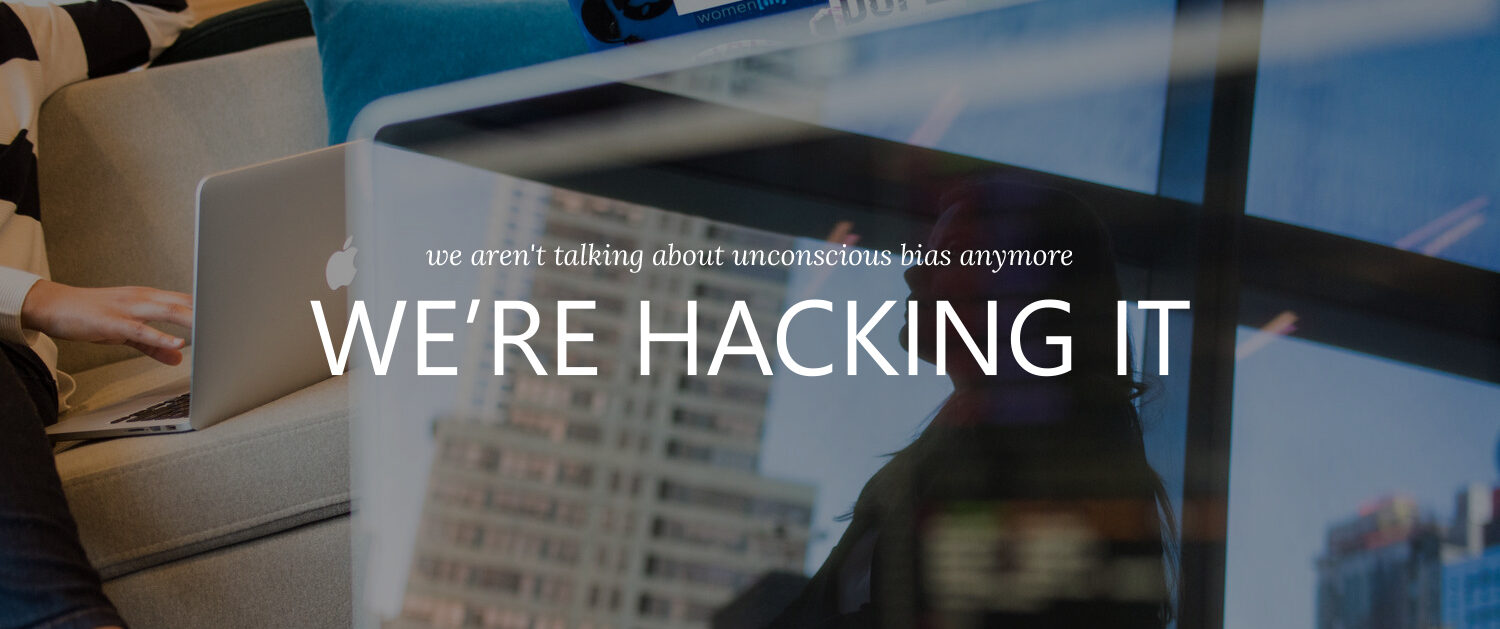Challenge Statements
On Saturday, February 25th, 2017 at the MIT Media lab, 150+ hackers with diverse backgrounds and expertise came together with mentors and experts to create solutions that combat unconscious bias, increase diversity and inclusion, and inspire future technologies.Hackers were asked to choose one of nine challenges across five topic areas: hiring and work practices, race relations, gender equality, education, and bias online.
Hiring & work
Ethnic name bias
Evidence has shown that job applicants with ethnic-sounding names are discriminated against during the hiring process, oftentimes receiving call-backs or job offers less frequently relative to other candidates with equivalent skills, education or background but without such names. Resume blinding – the elimination of names from the initial screening of resumes – has been suggested and partially implemented as a solution, but it is not widespread and only addresses the very initial phase of the hiring process; bias based on ethnic origin still persists in later stages of the hiring process and even in the workplace.
How would you solve this issue and create a hiring process that is truly blind to ethnic origin or race?
Prestige or class bias
Recent studies have concluded that class and socio-economic status can be extremely influential during the hiring process. Resume readers often attribute more importance to school prestige than candidates’ demonstrated achievements, thereby eliminating extremely talented individuals who did not attend prestigious universities. Even more subtle hints of one’s socio-economic background, such as extracurricular roles, hobbies or volunteer activities, can negatively influence applicants’ chances of receiving job interviews.
How would you address this challenge and find ways to make sure achievement and potential are measured objectively throughout the hiring process?
Ageism
In the wake of the financial crisis, many people who lost their jobs eventually left the employment pool permanently because they couldn’t find new work. These tended overwhelmingly to be older workers whose roles were either obsolete or now being filled with younger workers. Even now, losing a job can be extremely damaging for older employees as their employment prospects remain much lower than those of younger peers despite official legislation that prohibits discrimination based on age.
How could you combat this bias-driven disparity and make sure that older employees are not discriminated against?
Foreign accents
Being foreign elicits unconscious bias at work or in school for millions of people. Research has shown that messages delivered in a foreign accent are taken less seriously than identical ones from native English speaker – no matter the topic of context. Similarly, within the education system, expectations from immigrants are often lowered without any regard to demonstrated ability or potential, thereby leading to a self-fulfilling-prophecy of diminished outcomes about foreign students.
How could you hack bias against foreigners to make sure that potential is assessed fairly and objectively, without regard to origin or language?
Racism
Policing
Video sharing on social media has heightened the public’s awareness of police killings of civilians in communities of color, sparking widespread protest and outrage throughout the United States. How would you tangibly reduce these lethal interactions and improve relations between police and the communities they serve?
Sharing economy discrimination
Recent research reveals that bias disproportionately affects people of color in the sharing economy, as they often experience lower booking rates on platforms such as Airbnb and higher cancellation rates on ride-sharing apps.
How can we circumvent bias in the sharing economy to ensure an equitable experience for all with regard to race?
Gender
Gender pay gap
According to median pay figures and a breakdown by ethnicity, women earn between $0.54-$0.85 for every dollar as men of their same position and experience level. How would you close the gender wage gap?
Leadership styles
Workplaces often give advantages to male-centered leadership styles that rely on assertiveness and self-promotion. Sheryl Sandberg’s Lean In became a New York Times Best Seller because women identified with it for addressing this reality. However, many women feel that when they do display such leadership behavior, they are penalized for seeming too aggressive. How would you legitimize working styles that are traditionally considered feminine (e.g., cooperation and coaching) while simultaneously addressing the double standard that women face when displaying “aggressive” behavior?
Hacking the Sports Bra
Sports and fitness are heralded as critical ways of building and creating physical and mental health. Moreover, they are phenomenal tools for confidence and skill-building in general. Girls and women are encouraged to participate in sports but oftentimes basic biological characteristics – primarily the existence of breasts – may implicitly restrict their ability to get involved. One study found that 51% of girls drop out of sports by age 17 (after most have gone through puberty). The Journal of Adolescent Health found that 73% of >2,000 interviewed girls between 11-18 cited breast-related concerns regarding sports and exercise.
Breast pain due to exercise affects many women, and up to a quarter of women who report pain also report reducing their activity levels or avoiding physical exercise altogether. While most women do wear sports bras, they are often improperly sized or poorly designed altogether. Finding the right support, particularly at an affordable price point, is an uphill battle in the best circumstances and simply impossible in the worst.
How can we re-think women’s sports apparel to make a better fit for their needs? How can we create a better sports bra to enable girls to stay in sports and help women re-prioritize their own health and wellness?
Hiring Quotas
Many corporations, especially big financial institutions and tech companies, are eager to higher more women since they acknowledge the corlation between talent diversity and success. They have even established hiring quotas as a metric to accomplish more diversity. Yet despite these efforts, these organizations still struggle in hiring and maintaining top female talent.
One explanation for this is that these companies do not have the mechanisms or tools to reach a broader or base of candidates. Others suggest that the process is designed in such a way that women are implicitly at a disadvantage due to different standards being applied to men and women during the interviewing process.
How can we design a process that increases the probability of hiring more women and helps us to achieve gender parity across all professions?
Education
Bias in the classroom
Sponsored by the Martin Trust Center for Entrepreneurship EdTech Chair
Sex, socioeconomic status and race are correlating factors that shape some teachers’ perceptions of their students’ innate ability to learn. Furthermore, implicit bias creates mindsets and beliefs that cloud some educators’ ability to fairly assess future potential. In alignment with this reality, research has shown that female students and students of color are not granted the same opportunities to enroll in honors or advanced courses due to gender-based and racially motivated assumptions about their ability to perform. How would you hack our nation’s education system to ensure that every child is given the opportunity to learn and advance without disruptions that are caused by implicit bias?
Politics
Bridging the Partisan Divide
Bias has been shown to play a critical role in elections, politics and public policy. Because each side on the political spectrum is biased against the other, each automatically disqualify the other’s policy positions – even ones that could yield cooperation. This contributes to partisanship and strengthens extremist elements on both sides instead of bolstering balanced views. In the wake of the 2016 presidential election in particular, and during the new President’s first days, we have seen a myriad of reflections of this phenomenon. People are finding it challenging to understand or empathize with the other side, which is currently often seen as an adversary or opponent. What solutions, tools or avenues can we uncover to overcome this bias and allow for objective, bias-free politics?
Bias Online
Doxing
Online harassment has become a pervasive and often vicious problem with real-life repercussions. 40% of Internet users have personally experienced online harassment, and 73% have seen others harassed. While the severity of the harassment varies, nearly a third of those who have experienced it report fearing for their lives.
Technology can play a role in the reducing the frequency and severity of common online harassment behavior. One particular form of online harassment is doxing – where someone maliciously searches for and publishes private or identifying information about a particular individual on the internet.
How would you create a technology solution that helps recognize doxing, flag it, and prevent it from recurring?
Online harassment
Sponsored by Hack Harassment
As online harassment proliferates, it may help look at what’s causing this behavior. While some internet users harass others with intent, some may not have a full understanding of what may be considered harassment.
How can we use technology to reach repeat offenders (being blocked, etc. on various platforms) and raise awareness of the severity of online harassment and the impact it can have. In what ways could this be used to prevent the harassment before it occurs? Or to help guide future behavior after it has happened? Through this we can hope to improve the harasser’s behavior when engaging online.
Bonus: Consider education like this for the ‘bystanders’ – those witnessing online harassment and letting it happen. How could we help others know when/how to responsibly speak up when they see it occurring?

